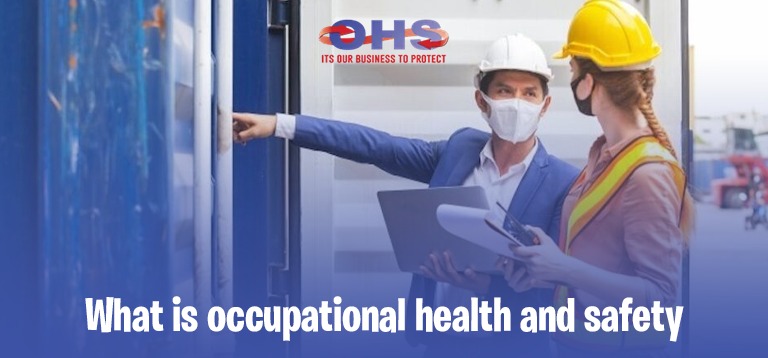Occupational Health and Safety (OHS) in the UAE isn’t simply a rule; it’s a necessary system that makes sure workers are safe and healthy at work. Because the UAE is quickly industrializing and its construction and oil industries are flourishing, keeping the workplace safe is important for both productivity and people’s health. Corporateohs and other companies like it offer health and safety services in the UAE to help businesses follow the law and create a culture of safety.
Understanding Occupational Health and Safety
Occupational Health and Safety (OHS) is the set of regulations, policies, and practices that are meant to keep workers safe and healthy. It includes anything from keeping people from getting hurt at work to making sure they are mentally and physically healthy. To make sure that work environments are safe and sustainable, OHS requirements in the UAE are in line with international standards.
Key Objectives of OHS Policies
- Prevent workplace injuries and illnesses.
- Promote physical and mental health.
- Enhance productivity through a safety culture.
- Ensure legal compliance and social responsibility.
Legal Framework of OHS in the UAE
The UAE’s OHS regulations are governed primarily by the Federal Law No. 8 of 1980 (UAE Labour Law) and are enforced through the Ministry of Human Resources and Emiratisation (MOHRE).
Key Regulatory Authorities
- MOHRE – Oversees labor and safety compliance.
- Dubai Municipality & Abu Dhabi OSHAD – Enforce local OHS regulations.
- Civil Defense & Health Departments – Ensure safety in specific sectors.
These laws make it mandatory for employers to provide a hazard-free environment, implement safety programs, and ensure proper training. With the assistance of corporate, companies can stay compliant and manage workplace risks more efficiently.
Key Components of OHS
1. Workplace Safety
Includes fall protection, fire safety, emergency exits, and machinery maintenance.
2. Health Protection and Monitoring
Ensures employees are protected from noise, dust, radiation, and other health hazards.
3. Risk Assessment and Management
Involves identifying, analyzing, and mitigating potential risks to reduce workplace incidents.
Why Occupational Health and Safety Matters
Strong OHS systems lead to fewer accidents, higher employee morale, and improved productivity.
Benefits for Employers
- Reduces absenteeism and turnover.
- Lowers insurance and compensation costs.
- Enhances corporate reputation.
Benefits for Employees
- Improved physical and mental well-being.
- Job satisfaction and confidence in workplace safety.
Social and Economic Impact
A safer workplace contributes to national productivity and aligns with the UAE’s vision for sustainable development.
OHS Standards in the UAE Construction Industry
Construction is one of the most dangerous jobs in the UAE. Laws say that businesses must provide personal protective equipment (PPE), safety obstacles, and frequent inspections. Workers who do dangerous jobs like scaffolding or operating a crane must get training. By working with corporate OHS, businesses can make safety plans that are specific to their needs and give their employees certified OHS training.
OHS in the Oil and Gas Industry
There are dangers in the oil and gas sector, such as fires, explosions, and exposure to poisonous substances. There are strict health, safety, and environment (HSE) measures in place, such as emergency reaction drills and constant monitoring. Companies often work with corporate officers to make sure they follow the rules, do risk assessments, and keep their operations safe.
OHS in the Healthcare Sector
Healthcare workers are at risk of getting sick, being exposed to chemicals, and being stressed. Infection control initiatives, mental health support, and ergonomic workplaces are all part of OHS policies in hospitals.
Workplace Risk Assessment
Risk assessments are legally required and form the foundation of all OHS programs.
Steps for Conducting a Risk Assessment
- Identify hazards
- Evaluate risks
- Implement control measures
- Monitor and review effectiveness.
Training and Awareness Programs
The UAE mandates OHS training for all workers, especially in high-risk industries. Regular refresher courses and drills ensure employees stay updated on safety standards.
Common OHS Training in the UAE
- Fire Safety Training.
- First Aid and CPR.
- Confined Space Entry Training.
- Construction Safety Certification.
Employer Responsibilities
Employers must:
- Maintain safe work environments.
- Provide protective equipment.
- Report accidents to MOHRE.
- Conduct regular safety audits.
Employee Rights and Duties
Employees have the right to:
- Refuse unsafe work.
- Receive training and protective gear.
- Report unsafe conditions.
They must also cooperate with safety procedures and attend mandatory training.
Role of Technology in OHS
AI and IoT devices are transforming OHS monitoring. Smart helmets, wearable sensors, and predictive analytics help detect hazards in real time. Cloud-based OHS systems streamline compliance tracking and incident reporting.
Challenges in Implementing OHS in the UAE
Despite strong regulations, companies face challenges such as:
- Lack of awareness in small firms.
- Language barriers among workers.
- Insufficient enforcement in remote areas.
Solutions
- Improved training programs.
- Multi-language safety materials.
- Stronger inspection frameworks.
Conclusion
In the UAE, occupational health and safety is more than just following the rules; it’s about making a culture of care and prevention. As industries change, making OHS better all the time will still be the most important thing for worker safety, productivity, and the country’s economic prosperity. Corporateohs is a reliable source for professional health and safety services in the UAE. They make sure that businesses follow the rules, work efficiently, and keep their employees healthy for a long time.

